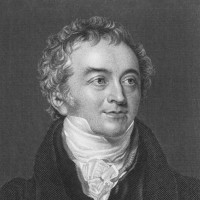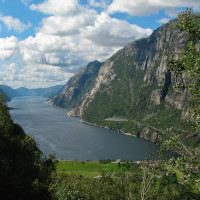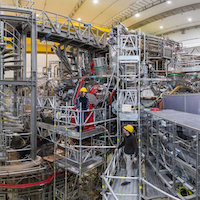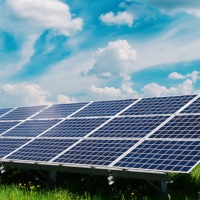June 21st - 24th 2021, University of Stavanger
Registration via IndicoContact the organizers: via email
About the 2021 Fysikermøte
"Fysikermøte" is the central biannual meeting of the Norwegian Physical Society attended by physicist in Norway, working in academia, industry and secondary education. This year the meeting will take place at the University of Stavanger between June 21st and 24th 2021.
The program features plenary talks on the latest developments in physics in Norway, as well as parallel sessions organized by the different topical subgroups of the society. We are thrilled to welcome a diverse set of domestic and international speakers to a dedicated outreach event on the Science of Energy on June 23rd. With many of our members having an international background, all talks will be given in English.
To register a presentation for the parallel session, please contact the the conveners of the respective topical subgroups, whose names are listed in the program section of this website.
We will organize a a social program during the meeting with coffee breaks and lunch, as well as an excursion combined with a dinner banquet at the botanical garden island of Flor & Fjære.
As in every edition, the program includes the traditional biannual gathering (årsmøtene) and an award ceremony for prizes, inclusing the Martin Landres-prize for best MSc-thesis and the education prize.
About the Norwegian Physical Society
The Norwegian Physical Society (NFS) was founded in 1953, with the aim of promoting research, information exchange and collaboration in the fields of physics. It has its origins in the Physics Association at the University of Oslo, which was established as early as 1939. Today, NFS has around 1000 members and is a member organization of the European Physical Society.
The NFS has eight topical subgroups: subatomic physics and astrophysics, condensed matter and atomic physics, biophysics, optics, acoustics, space, plasma and climate physics, industrial and energy physics, as well as teaching and dissemination (Norwegian Physics Teachers Association). The aim of these groups is to strengthen the contact between their members working in the same field. Read more about the topical subgroups.
In addition to the topical subgroups, NFS has created networks for women in physics, as well as for physics history and philosophy.
Scientific Program
Condensed matter physics is a field of research that spans many different specializations of modern physics, including chemical and polymer physics, thin films, dynamics and statistical physics, semiconductor physics, crystalline solids and their microstructure, magnetism, metal and materials physics, surface science, low temperature physics, as well as vacuum science and technology.
Atomic physics studies the basic interactions between electrons, lasers, atoms and molecules. These include electron excitation and ionization, high-resolution laser photoionization, as well as the production and studies of laser-cooled and trapped atoms.
Climate physics is an interdisciplinary approach to scientific climate research with connections to meteorology, oceanography, geology, geophysics, biology and mathematics.
Space physics research in Norway addresses the Earth's upper atmosphere, ionosphere and magnetosphere and related plasma physics; small objects in the solar system, mesospheric and cosmic dust and dusty plasma phenomena.
Subatomic and particle physics studies the microscopic constituents of matter and the forces acting between them. Strong collaborations exist with the European Center for Nuclear Research (CERN) and other major institutional research infrastructures.
Astrophysics explores the past, present and future of the universe using various observational methods from optical telescopes to gravitational wave observatories.
Schedule
The science of Energy
Selected presentations are available on the YouTube channel of the Institute of Mathematics and Physics at the University of Stavanger.
-

The science of Energy
Prof. Richard Muller
University of California, Berkeley
author of Energy for future presidents -

Hydropower
Assoc. Prof. Pål-Tore Storli,
Waterpower Lab,
NTNU -

Fission
Assoc. Prof. Alexander Rothkopf,
Institute for Mathematics and Physics,
University of Stavanger -

Oil
Prof. Aksel Hiorth,
Institutt for energiressurser,
Universitet i Stavanger -

Fusion
Prof. Dr. Thomas Klinger,
Wendelstein 7-X project leader,
Max-Planck-Institute for Plasma Physics -

Hydrogen
Assoc. Prof. Olena Zavorotynska
Institutt for matematikk og fysikk,
Universitet i Stavanger -

Batteries
Dr. Fride Vullum-Bruer,
Senior Research Scientist
SINTEF Energy -

Solar energy
Tine Uberg Nærland, PhD
Research Scientist
Insitute for Energy Technology -

Wind energy
Prof. Trond Kvamsdal,
Department of Mathematical Sciences
NTNU

